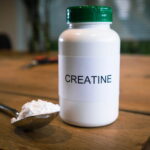Are you thinking about breast lift surgery? Whether you’ve been considering it for a while or it’s a recent thought, you’re in the right place. We’re here to guide you through the essential things you need to know before making any decisions. After all, knowledge is the first step towards making an informed choice about your body.
In this guide, we’ll cover everything – from what the procedure entails to who makes an ideal candidate and how to ensure a smooth recovery. So, read on!
1. What is Breast Lift Surgery?
Breast lift surgery is also known as Mastopexy in medical terms. It’s a procedure that can restore your breasts to a more youthful shape and bring back confidence. It’s about regaining that firmness and perkiness that may have changed due to various events, such as pregnancy, weight loss, or natural aging.
2. Who is a Good Candidate for Breast Lift Surgery?
It’s noteworthy that breast lift surgery is not a one-size-fits-all solution, and not everyone is an ideal candidate. That’s why, before considering this procedure, understanding the criteria for being a good candidate is essential.
Standards for an Ideal Candidate:
An ideal candidate for breast lift surgery typically meets the following criteria:
Good Health: This factor is essential for safe surgery and smooth recovery. According to people who get their breast lift by Dr. Courtney says that you should be prepared to discuss your medical conditions with your doctor openly. You may ask why. Well, it will help them to tailor the surgery to your specific needs, ensuring your safety and a successful outcome.
Note: you must avoid aspirin and pain-relief medications for at least one week before and after surgery.
Sagging Breasts: If your breasts have lost their firmness and are sagging, you may be a good candidate. Sagging can be due to pregnancy, breastfeeding, weight loss, or aging.
Stable Weight: It’s important to be at a stable weight before undergoing the procedure. It’s because significant weight fluctuations after the surgery can impact the results.
Non-smoker: Smoking can degrade the healing process and increase the risk of complications. So, quitting smoking before the surgery is strongly recommended.
Ultimately, the best way to determine risks is through a consultation with a qualified plastic surgeon. They will evaluate your circumstances, discuss your goals, and provide personalized advice. This way, you can make an informed decision about your surgery.
3. The Procedure Explained
Now, let’s delve into the details of this procedure so you can better understand what to expect. Here’s a step-by-step walkthrough:
– First, you’ll receive anesthesia to keep you pain-free during the procedure. The choice of anesthesia (local or general) will be discussed with your surgeon before the surgery day.
– Next, the surgeon carefully plans cuts. These cuts can vary in shape and length, depending on how much lifting your breasts need. They might go around your nipple, down from it, or along the crease beneath your breast.
– These cuts give the surgeon access to your breast tissue. They remove extra skin and lift and reshape your breast tissue. Besides, they adjust the size and position of your nipple if needed.
– When everything looks just right, the surgeon closes the cuts with stitches. Sometimes, these stitches disappear independently, and other times, they must be taken out later.
Now, you may ask, “How much time does it takes?” Well, generally, the duration of the surgery varies depending on the complexity of the procedure. It typically ranges from two to three hours.
Understand that knowledge about the step-by-step process of this surgery can shed anxiety. Plus, it helps you feel more confident about the procedure.
4. Risks and Complications
Like any medical procedure, this surgical procedure also carries certain risks and potential complications. So, it’s essential to clearly understand these factors before making your decision. Here are common risks associated with this surgery:
Infection: Any surgical procedure carries a risk of infection. However, following your surgeon’s post-operative care instructions can significantly reduce this risk.
Scarring: This is inevitable after breast lift surgery, but its scope varies from person to person.
Changes in Sensation: Some individuals may experience changes in nipple or breast sensation after surgery. While this is usually temporary, discussing these possibilities with your surgeon is important.
To avoid these risks, choose a board-certified and experienced plastic surgeon. Follow all pre-operative and post-operative instructions carefully. It may include maintaining good hygiene and taking prescribed medications. Additionally, attend all follow-up appointments to ensure your recovery progresses as expected.
Conclusion
Breast lift surgery is a transformative procedure that can restore youthful contours and rejuvenate your confidence. However, it’s crucial to be well-informed about the process, ideal candidates, and potential risks. In this instance, consulting with a qualified plastic surgeon is the first step.
Did you find this helpful? Check out our other helpful articles on our website.
Read Also
- Why the Keto Diet Works for Some People—and Fails Dramatically for Others: An Ayurvedic Breakdown for Modern HealthcareThe keto diet has dominated weight-loss culture for years. For some people, it produces rapid fat loss, stable energy, and improved mental clarity. For others—especially those who gain weight easily—it leads to burnout, digestive distress, rebound weight gain, high cholesterol, and a metabolism that feels slower than before. Healthcare often frames this as a discipline… Read more: Why the Keto Diet Works for Some People—and Fails Dramatically for Others: An Ayurvedic Breakdown for Modern Healthcare
- How to Choose the Best Assisted Living Facility for SeniorsAre you looking for the right assisted living facility for a senior loved one? Choosing a place can feel overwhelming. There are many factors to consider, from care services to the environment. Safety, comfort, and social opportunities play important roles in daily life. Each senior has unique needs and preferences that must be met. Understanding… Read more: How to Choose the Best Assisted Living Facility for Seniors
- Burn Smart, Not Hard; Shape Burn: Clean Protein for Weight ManagementYou want to feel light, strong, and confident. You don’t want crash diets or fake promises. You need a plan that works with your body, not against it. That’s where Shape Burn comes in. You can burn fat without losing strength. You can eat better and stay full. You can manage weight in a way… Read more: Burn Smart, Not Hard; Shape Burn: Clean Protein for Weight Management
- Creatine Basics: How Much Is 5g, How Much Water You Need, and Whether Pills or Powder Work BetterIf you’ve ever walked into a supplement aisle or scrolled through fitness TikTok, you’ve probably seen people talking about creatine — usually with a shaker bottle in hand and promises of better workouts and faster gains. And honestly? They’re not wrong. Creatine is one of the most researched and effective supplements for muscle strength, recovery,… Read more: Creatine Basics: How Much Is 5g, How Much Water You Need, and Whether Pills or Powder Work Better
- Understanding Breast Cancer in Men: Key Facts and SymptomsBreast cancer is often thought of as a disease that only affects women. However, men can develop it too. Although it is less common, early detection and awareness are important. Read on to learn key facts, symptoms, and ways men can take action to protect their health. How Common Is Breast Cancer in Men? Breast… Read more: Understanding Breast Cancer in Men: Key Facts and Symptoms
- Raising Awareness: Breast Cancer Facts for Older MenBreast cancer does not affect only women, and many older men do not realize they are at risk. Because the signs can be easy to miss, many men learn about the disease only when it has progressed. Learning the basic facts now can help you stay aware and respond early. If you want to protect… Read more: Raising Awareness: Breast Cancer Facts for Older Men
- How Regular Exercise Transforms Senior Living for the BetterGetting older is something everyone experiences, but how we age can be greatly influenced by the choices we make. One of the best ways for seniors to stay healthy, happy, and independent is through regular exercise. Staying active isn’t just about fitness-it can improve nearly every part of life. From building strength and energy to… Read more: How Regular Exercise Transforms Senior Living for the Better
- The Importance of Mammograms and Early Detection for Aging WomenAs women age, taking care of their health becomes even more important. One key part of women’s health is regular breast screenings. Mammograms are a simple but powerful tool that can detect breast changes early. Early detection can save lives by finding problems before they become serious. For aging women, staying informed and proactive about… Read more: The Importance of Mammograms and Early Detection for Aging Women









